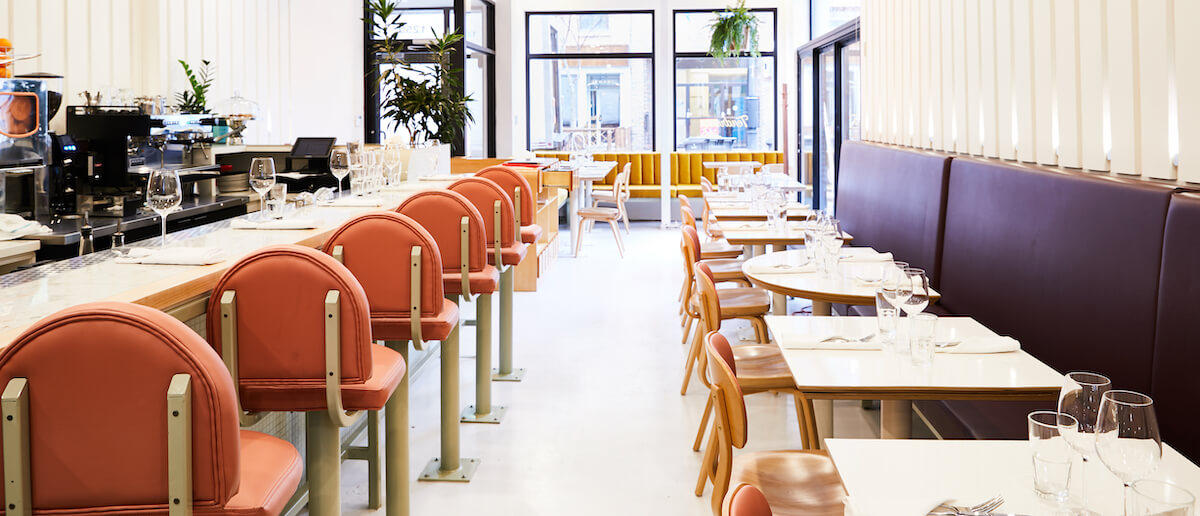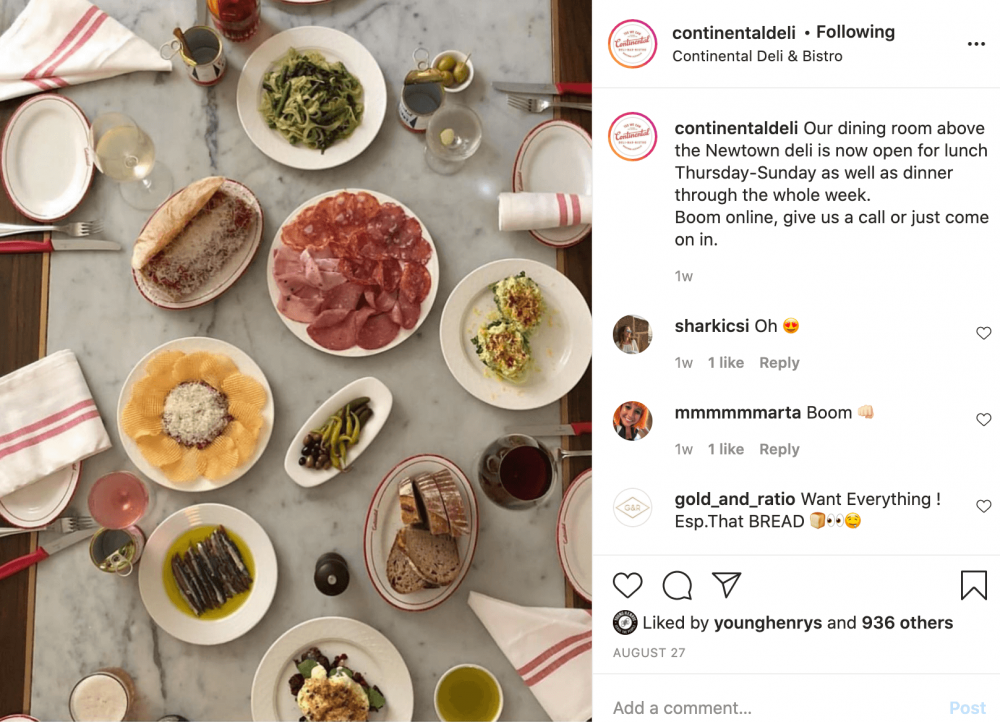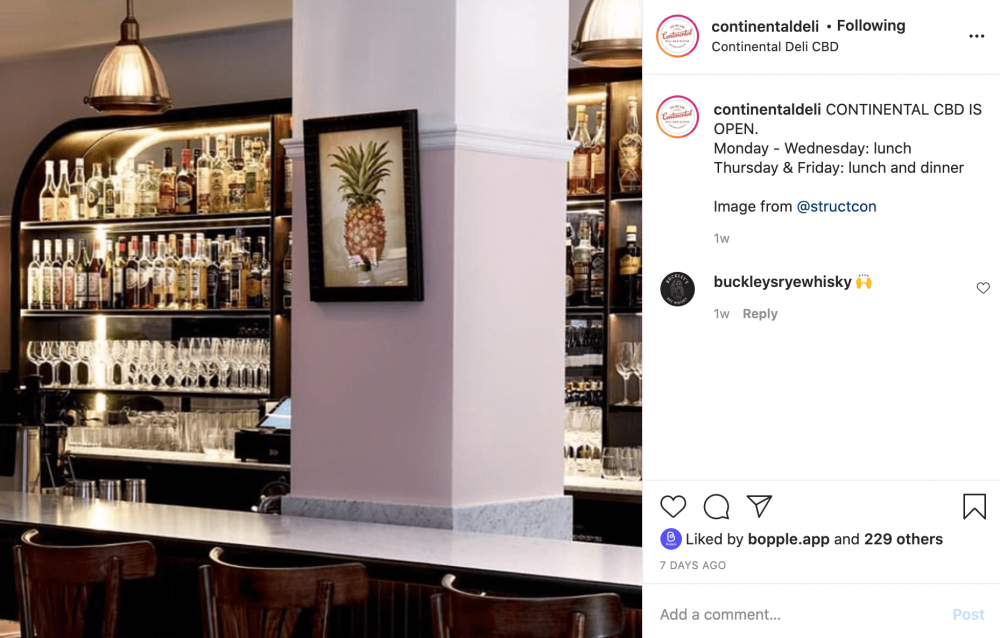
Customer service is the cornerstone of a great restaurant experience, but what does that mean exactly?
While each customer’s preferences are different, there are a few markers that standout restaurant experiences share in common.
We set out to define the factors that make for a great customer dining experience because ultimately that’s what generates positive online reviews, compels more diners to book online reservations and skyrockets your revenue per service.
What makes a great restaurant experience?
What consumers expect from a restaurant experience certainly varies depending on the restaurant type, but there are some fundamentals that separate the great restaurant experiences from the forgettable ones.
- Friendly, personalised service
- Consistently great food
- A memorable atmosphere
- Efficient customer service
Create a standout restaurant experience
Smart, scalable, dependable. Run your entire restaurant from Lightspeed's all-in-one platform.
1. Friendly, personalised service
Guests want to feel human, not like a number that servers rush out the door to maximise profits.
The opportunity to deliver a human experience starts with your hosts and servers. They’re the ones your guests will engage with as soon as they walk in and throughout their meal. Guests want sincerity and positivity, someone who is as excited to serve them as they are to be enjoying a meal out.
How can you make sure that this is the case? It starts during the hiring process.
Ray Camillo, CEO and Founder of Blue Orbit Restaurant Consulting, puts people applying for host and server positions through what he calls a five-second likability test. It may seem like not very much time to pass judgment on someone’s character, but ultimately that’s how long it takes for a guest to decide whether or not the people serving them are likable.
Carrie Luxem, CEO of Restaurant HR Group, suggests exclusively hiring candidates with outgoing personalities, the ability to multitask, move at a fast pace and perform under pressure with a smile.
To do that, Luxem designed a timed assembly test that simulates the pressure of a busy Friday night service.
“We’re testing for their ability to handle pressure gracefully.” If a candidate is too focused on the task at hand, they may not be able to balance interacting with guests and making them feel comfortable at the same time.
Tips for friendly, personalised service
While part of delivering friendly, personalised service comes down to your server and host’s personality, there are two simple, scientifically-backed things they can do to increase their likability and their ability to upsell and cross-sell menu items in the process.
Address guests by their name
It’s a simple tactic that makes your service more personalised and friendly. Plus, there’s science to back up the notion that when people hear their first name, it triggers a unique reaction in their brain.
According to a study published by the peer-reviewed journal Brain Research, hearing your first name triggers brain activity in the brain’s middle frontal cortex (which is associated with social behavior), the middle and superior temporal cortex (which is associated with long-term memory and auditory processing) and the cuneus (which is associated with visual processing).
Dale Carnegie, the author of How to Win Friends and Influence People, claims that remembering a person’s name is one of the six ways to make people like you. And when people like you, they’re more likely to listen to your suggestions (like when your server suggests a wine that pairs well with their dish, for instance).
Remembering and calling your guests by their name is the first step in delivering friendly, personable service. Plus, it can lead to more success in cross-selling and upselling menu items, which results in more revenue per table served.
Give suggestions based on guest preferences
It’s always best practice for servers to ask the guests they’re serving whether or not they have any dietary restrictions and answer any questions they may have on menu items.
This is a great opportunity to get a feel for their preferences and which menu items they’ll enjoy the most. Of course, food quality and whether or not it matches a guest’s preferences plays a huge role in their restaurant experience.
While part of this comes down to your server’s ability to read the table and actively find out what guests like, Lightspeed can also help with its Customer Profiles.
Just because you’re serving a guest for the first time doesn’t mean it’s their first time dining at your establishment. Ask them if it’s their first time. If it is, then you have an opportunity to educate them on your menu and set up their customer profile.
If it isn’t their first time, then your server has an opportunity to search for that customer’s profile and see what their favourite menu items are based on the volume of times they’ve ordered it.
2. Consistently great food
The food you serve is the cornerstone of your business and certainly influences how guests perceive their restaurant experience.
Food quality can suffer when there’s a lack of emphasis on quality control or when there are miscommunications between guests, the server taking their order and kitchen staff preparing that order.
Your cooks should consistently evaluate the dishes they’re preparing to see if they have the flavour profile they want before it’s served.
Your food runners should verify each dish’s plating and presentation and make sure that it’s up to standards.
Empower each of your staff, from the cooks to the runners, to focus on food quality and presentation and to hold one another accountable. Each menu item that you serve shapes how guests perceive your establishment and their dining experience as a whole.
Presentation matters
The way your dish looks is proven to influence how well a guest thinks it tastes.
The findings from a study by Oxford gastrophysicist and professor Charles Spence suggest that food presentation can actually make a dish taste better.
In his study, Spence gave 60 people three salads and asked them to rate each one both before and after they ate them. Each salad used the same ingredients but they differed in their presentation.
One was put together with no effort given to its presentation, one was neatly arranged and the third was made to resemble a painting by artist Wassily Kandinsky.
Can you guess which of the three salads the study participants thought tasted better?
It was the salad that resembled the painting.
In fact, participants thought it tasted 29% better, even though it used the exact same ingredients. They were even willing to spend up to three times more on the beautifully-plated dish.
When food both looks and tastes good, your guests are bound to enjoy their restaurant experience more than if you didn’t focus on presentation at all. Based on the study findings, you could even increase the price of your menu items without scaring customers away.
Related read:
3. A memorable atmosphere
From your color scheme to your furniture choices and lighting, your establishment’s aesthetic is an extension of its brand and a powerful way to generate interest in and drive traffic to your restaurant.
Adhere to a concept
The foundation of a restaurant’s atmosphere is built from the moment you choose your restaurant’s concept. From that point on, the concept should be considered in every decision that potentially shapes the restaurant’s atmosphere.
Sometimes, the concept won’t need a specific atmosphere to make it feel authentic. A modern steakhouse, for example, doesn’t have a precedent. Customers don’t have a preconceived notion of how this type of establishment is supposed to look and feel. Even when there’s no blueprint for creating a good restaurant atmosphere, the atmosphere still matters.
Keep decor and furnishings consistent
Diners are more likely to respond positively when the wall decorations, paint colors, furniture and decorative accents are all part of one cohesive theme. Consistency is key in creating a restaurant design that contributes to a memorable restaurant atmosphere.
Soften the lighting
Restaurant lighting has a huge effect on the ambiance. Some fast food and fast casual restaurants go with bright, fluorescent lighting. However, at sit-down locations, a comfortable, warm light is more inviting and appealing to guests.
As a general rule of thumb, harsh lighting isn’t conducive to a good guest experience because it contributes negatively to your restaurant’s atmosphere.
Choose music thoughtfully
The music that you play should contribute to a positive dining experience for guests. For example, while fast casual and fast food dining establishments can get away with nearly anything in the way of music, loud or hard-charging music is not the ideal choice for an upscale dining experience.
The volume at which music is played also matters. If music is too loud, diners typically attempt to talk over the music. This increases crowd noise, which generally isn’t a positive contributor to the overall dining experience.
Design with Instagram in mind
Instagram is a visual platform that 60% of its users use to discover products and places. You can attract guests by using the platform to show off your beautifully-plated dishes and trendy decor.
With venues in Sydney’s CBD and the eclectic suburb of Newtown, Continental Deli knows how to leverage their ambiance, decor and food presentation in their Instagram feed.


The right decor encourages people who discover your restaurant through Instagram to make a reservation, document their dining experience from the food to the decor and share it with their Instagram followers. This is what we call user-generated content (UGC), and it’s probably the most authentic type of marketing out there (in other words, it actually works).
You can even repost the best-looking posts on your restaurant’s Instagram feed to drive more engagement. User-generated content posts receive 28% more engagement than other types of social posts, partly because they’re perceived as more authentic.
Part of why this UGC content is perceived as more authentic is because it isn’t created by the people who run the restaurant. It’s created by customers. It’s an honest depiction of what other guests can expect if they dine at your establishment.
Include user-generated content to add social validation (also known as social proof) to your restaurant’s social media marketing mix.
4. Efficient customer service
Competition in the hospitality industry is fierce. According to a study conducted by Ohio state university, 60% of restaurants fail within their first year and 80% don’t make it past their first year.
While there are many factors that contribute to that staggering statistic, it’s important to note that efficiently serving guests is mutually beneficial. Efficient, customer-centric, organised service is an integral part of great restaurant experiences.
Customers want an optimal path to completing a task, whether that’s ordering their meal or splitting and paying their bill.
When you think of your restaurant experience, think of it from your customer’s perspective. Each touchpoint, from how hosts seat guests to how guests order and pay for their food, is a potential point of friction if it isn’t efficient.
Of course, the expectations for the ideal restaurant experience vary by restaurant type. Would you expect the same experience from a quick-service restaurant (QSR) as you would from a fine dining restaurant? Of course not.
With that being said, here are a few key considerations for more efficient restaurant workflows and customer experiences:
Seating
Your customers start forming an impression of your restaurant as soon as they walk in the door. The last thing you want is for there to be a long queue at the door.
Are your hosts equipped with the tools they need to efficiently check in reservations, seat guests or add seats to a table if need be? If you answered no, then you can address this customer pain point with a mobile restaurant point of sale that supports all of these tasks.
Ordering
If taking and preparing orders has been a problem in the past (order errors and slow turnaround are key indicators of this being the case), perhaps it’s time to look into table-side ordering, self-order menus or a kitchen display system (KDS).
Can your point of sale support special requests and order modifications? This can be as simple as indicating food allergies or dietary restrictions. If the answer isn’t a resounding yes, then this is another opportunity for you to improve your customer’s dining experience.
Paying
The final touchpoint in your customer’s dining experience that you should review is how they pay.
The real question is: how do your servers know whether or not a table is ready to pay? If they need to go ask, then you have an opportunity to streamline the way you process payments.
Lightspeed’s adjustable floor plan features colour indicators that let servers know which stage of a meal a table is at, whether they’re waiting to order, if there’s an order in progress or if they’re waiting to pay.

Equipped with that information, servers can process payments and serve customers more efficiently. Plus, this can contribute to improving your table turnover.
Splitting the bill
Have your guests ever wanted to split their table’s bill, but your point of sale didn’t support that function?
This can leave a sour taste in a guest’s mouth, especially if they weren’t expecting to front the entire table’s bill. You want your guests’ final interaction with your staff to be as efficient as the first.
Make sure that your restaurant’s point of sale can support bill-splitting so that paying for meals becomes a frictionless process.
How do you create great restaurant experiences?
While your restaurant experience will certainly change depending on your restaurant type, there are four pillars that separate standout experiences from forgettable ones.
- Friendly, personalised service
- Consistently great food
- A memorable atmosphere
- Efficient customer service
Knock each of the above out of the park and you’re well on your way to generating more positive customer reviews, blowing up on social media and becoming a hotspot that people flock to.
If you’re ready to improve your restaurant with a world-class point of sale, let’s talk.

News you care about. Tips you can use.
Everything your business needs to grow, delivered straight to your inbox.



